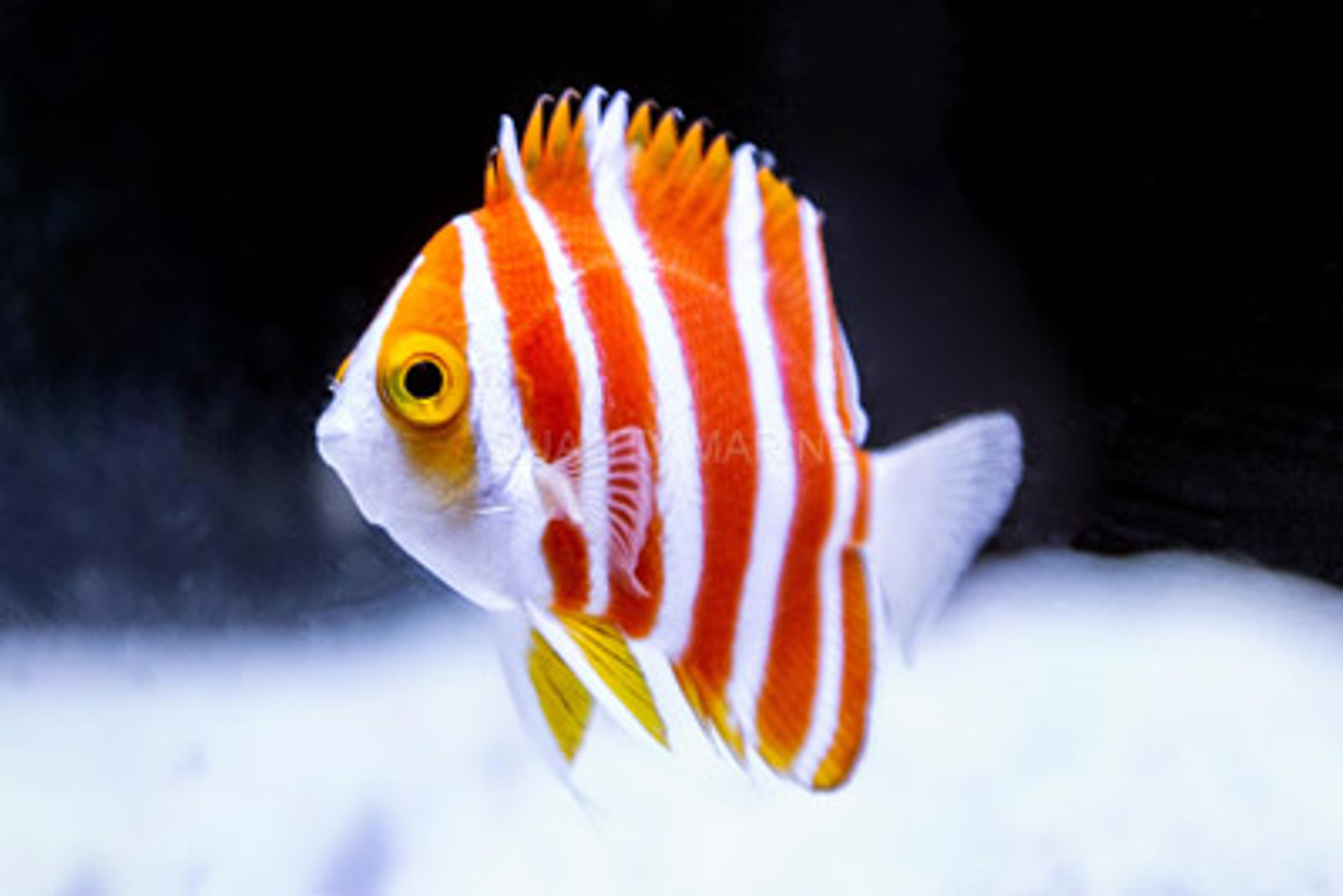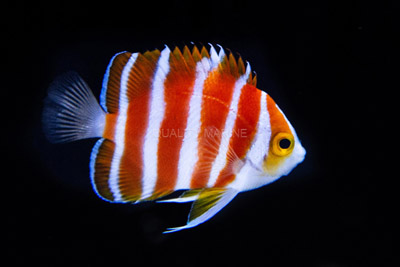Peppermint Angel (Paracentropyge boylei)

Youve likely heard of the genus Centropyge, the so-called dwarf marine angelfish group. Most of the thirty-four members of the genus are quite common in the marine aquarium trade and very popular among hobbyists and importers for their abundance and hardiness. There is, however, another sub-genus of Centropyge that also borrows the moniker dwarf angelfish with three members, angels of the Paracentropyge genus. Its place in taxonomy is still disputed amongst ichthyologists, they have been shuffled around different genus, some of which are defunct, and others that were incorrectly described such as Holocanthus sp and of course Centropyge itself. While a discussion on their anatomy, distribution, and phenotypic differences in regards to their taxonomic place in the animal kingdom would be fascinating, were here to address not just a fish in this genus, buy the icon of reef-fish kept in captivity. P. Boylei is just an illusive coffee table book cover to many but we assure you it is definitely real and a near spiritual experience for those who get a chance to interact with it and see it in person.
The crown jewel of this genus, nay the holy grail of the aquarium industry, needs absolutely no introductions, despite the fact that most hobbyists will never have a chance to see it in person let alone be responsible for the husbandry of one. Named for famed diver and its original collector, Chip Boyle, if there is an unobtainable unicorn of tropical marine fish in public, commercial and amateur aquaria, its the Peppermint Angelfish (Paracentropyge boylei). Its brilliant red with a slight hint of orange body is highlighted by yellow in the face and vertical white lines along the body, dorsal and caudal fins makes it instantly recognizable and draws awes from even the most jaded or seasoned expert aquarists and biologists alike. Of all of the illusive and highly sought after Pomacanthids, and there are many in this industry, the peppermint is assuredly the one that has secured its place as an icon.

This species is much more elusive than its two cogenitors (Paracentropyge multifasciata and Paracentroyge venusta), having never been observed shallower than 53 meters (~174 feet). Its range is also much smaller, generally limited to a few locations in the Eastern Pacific; Polynesia, the Cook Islands and Rarotonga. These two factors mean that collection opportunities are much more rare. The depth at which these fish are found at necessitates the use of a SCUBA rebreather, so its a potentially dangerous process that the average collector is not trained for. Though a tropical fish, it is not, nor should it be, acclimated to the bright lights of most aquaria. Despite being found at depths of up to 120m (near 400 feet) the temperature range in which they are found is surprisingly higher than one might think; 22-24 Celsius (71-75f). If you want to see this fish in person but cant quite muster up the resources to obtain a specimen, your best bet is public aquaria (specifically the specimen the Waikiki aquarium has is stunning).
In a world of hypotheticals lets say you get your hands on one of these or one of its more common cogenitors and need to be pointed in the direction of a care guide. If an area of husbandry had to be stressed in particular with this genus, it would most certainly be nutrition; your focus should be on getting this fish to eat as soon as possible as most waste away due to starvation. Due to their benthic and shy behavior, we havent quite been able to observe their wild diet in detail. Its paramount to place these species in an aquarium with subdued lighting and lots of live or long seeded rockwork. You may also even want to consider the addition of captive bred cultures of copepods and amphipods (such as Tigriopus sp.) in heavy amounts a few weeks before adding your new Paracentropyge. This will buy you time as you attempt to get the specimen eating captive fare. Frozen copepods such as Calanus sp. can be an initial test depending on the size of the specimen, but ideally down the line you want them eating more substantial foods like Mysis. For those willing to go the extra mile, culturing your own black worms or daphnia is a great way to go.
As far as filtration and water flow, the turnover of the tank be slightly slower than that of your average turbid reef tank which seeks to simulate intertidal and shallower water zones is suggested. A quality ultraviolet sterilizer that processes 100% of the water in the system is suggested.
If you are looking for a show specimen in your aquarium or one thats not often kept healthy long-term, this would be a genus that would earn you some bragging rights in your local aquarist community. That being said, make sure you are up to the challenge by having other reclusive or non-boisterous tank mates and an extremely mature aquarium, and in the case of the Peppermint, you may want to house it alone or create a bio-tope with other fish from its collection zone.
While these fish in the genus Paracentropyge may be much less common (if not literally unobtainable in the case of the Peppermint) and more sensitive than their cousins the Centropyge, they offer a unique and fun challenge for both the amateur and expert aquarist alike.